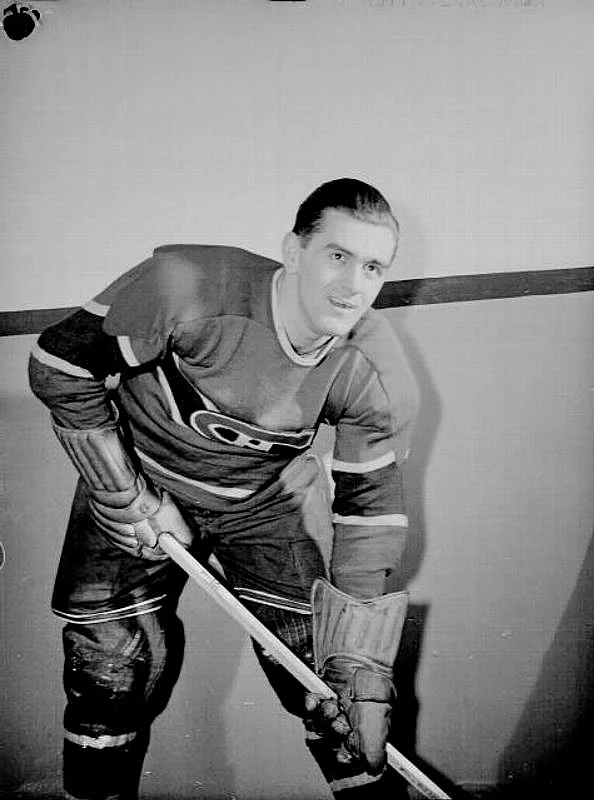Legends of the Follicle: A Week In Sports History Like No Other
They called him Wilt “the Stilt” Chamberlain. They also called him “Goliath.” Go figure.
Here’s Mr. Chamberlain posing for a shot as a Harlem Globetrotter in 1958, not long before he took over the NBA with his monstrous ways.
His number, 13, was retired by the Globetrotters in 2000.
Photo: Wiki Commons
Ladies and gents, presenting Legends of the Follicle — a new series celebrating our truest champions of men’s grooming. Anytime you see a story lead with “LOTF,” know you’ll be reading about a man who answered the call, a man who’s been places, and most likely, a man whose life can inspire ours.
Today, we start with a toast to Wilt Chamberlain’s still-uncanny feat of scoring 53 points during regulation time in a season game… as a rookie.
Plus, a nod to a Quebecois icon who scored goals like a beast and spurred riots like an outlaw.
Let’s start.
On the night of March 18th, 1968, Wilt Chamberlain went from marvel to planet eater.
Not that many called the late, Philly-born center a mere “man” before that night; He’d already secured one of his two NBA championships by then, not to mention the three league MVP trophies sitting pretty on his shelf, with the his fourth and last on its way for his 1968 campaign. Chamberlain had seven All-NBA First Team inclusions up ‘till that night, too, and he’d already topped the league in point-scoring as many times. There’s more but you have things to do.
Even the passive b-ball fan of the ‘60s knew Wilt Chamberlain was not of this earth.
But on March 18th, 1968, no one saw it coming: Chamberlain absolutely mauled the Los Angeles Lakers with a triple-double of 53 points and 14 helpers, and he snagged 32 whole rebounds, leading his hometown 76ers to a resounding 158 to 128 win.
Who registers 32 rebounds in a single NBA game? Wilt “the Stilt” Chamberlain does, and that’s nothing compared to the 55 he once brought down in 1960.
It doesn’t end there; There’s been much debate around the rest of The Big Dipper’s numbers from that night in ‘68, but allegedly he’d also notched 11 steals and 24 blocks. Since the NBA didn’t count steals or blocks as stats back then, no one knows the official numbers for sure. But if you watch old footage of the guy, any money says it’s true.
Like his presence on the court, Chamberlain’s presence precedes him. Part of that’s thanks to his style. By the time we saw Chamberlain’s triple-double, he’d gone from French moustache as a Warrior to full-on beard with Philly, once again proving that mavericks can’t be tamed (just ask the Houston Rockets’ James Harden, a bearded man who’s only second to Chamberlain when it comes to consecutive 30-point games played with 32.).
He also proved that moustaches aren’t for everyone, but when they work, man do they work. Whether it was a handle-bar, a Zapata or even a goatee, seldom did the world see the space between Chamberlain’s nose and upper lip.
In a way, we get that.
By the way, Wilt Chamberlain is still the only NBA player to have scored 100 points in a game.
And there’s more.
Maurice Richard was a Montreal Canadien, a fast skater who scored goals at will, and believe it or not, the guy who clocked a linesman mid-game.
Would you mess with this guy?
Photo: Wiki Commons / Bibliothèque et ARchives nationales du Québec
It’s not what it seems, though.
On March 16th, 1955, then NHL President, Clarence Campbell, suspended Richard from playing the rest of the 1955-56 NHL season... and the subsequent playoffs.
When Richard’s punishment made news, thousands of Canadiens fans took to Cabot Square the next night in what’s known as the “Richard Riot” of Saint Patrick’s Day.
It all happened three evenings prior in Boston, on the 13th, as Richard and co. battled the Bruins. An already chippy game got hot in the third when Former Canadien, Hal Lacoye, decided to high-stick Richard in the head, drawing blood and, worse, the fury of a proud Quebecer who’d taken a little too many knocks and hooks for making grown men look like fools.
That immaculate slick-back was one thing, but did you know Maurice Richard rocked on-point, printed jackets and Bengal-striped button ups? Mon dieu.
Photo: Wiki Commons
The clash sent Richard into a frenzy; he charged Lacoye and smashed him in the shoulder with his stick before punching linesman, Cliff Thompson, who made the mistake of playing peacemaker. After the game, Boston’s finest tried arresting Richard in Montreal’s locker room, but his teammates barricaded the doors so they couldn’t get in. Different times.
The riot that ensued on the 17th wasn’t without its history; Canadiens fans felt Campbell — obviously not a Quebec native — made a harsh example of Richard, who represented an embittered Quebec people. By the mid-fifties, French-speaking natives of the province earned less than their English counterparts at the time, and it didn’t help that plenty of English-speaking Canada thought little of them.
It all made the perfect contents for a cauldron of shit that would explode on the 13th, when Richard and his perfect slick-back went postal on a guy who pressed the last button at the worst time… then again on the 17th, while the Habs’ most faithful whipped food and shoes at Campbell (who was at the Forum for the Habs and Wings game, and against the advice of his fearful peers, no less.). And this was all after Richard slapped a ref in the face three months prior in Toronto. He coughed up all of $250 in fines for that. Again, different times.
It’d be easy to write Maurice Richard off as a psycho, but there was much more to this myth of a man. He could skate like the wind, hit like a wall and perhaps most of all, he was Robin of the Hood to a part of Canada that felt cornered, and rightfully so.
As with Mr. Chamberlain, inexorable was the bond between Mr. Richard’s presence and his sense of style. He could mix suit and shit patterns like he could snipe goals, but what lead the way was always his classic, slick-back haircut — short on the sides, not so short on top. Richard was as loyal to that cut as he was to his Canadiens, for whom he played his entire 18-year career.



